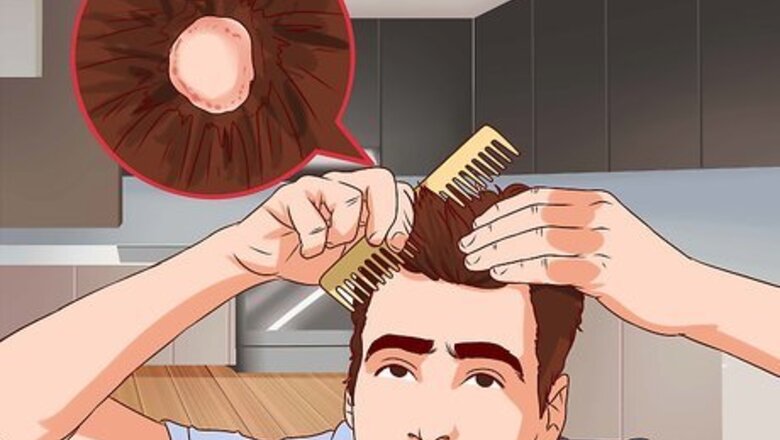
views
X
Expert Source
Lydia Shedlofsky, DODermatologist
Expert Interview. 30 September 2020.
These fungi are microscopic organisms that thrive on the dead tissues of the skin, hair and nails. It is called ringworm because of the characteristic rings of blisters and scaly skin that form once the infection spreads.[2]
X
Research source
You can contract ringworm if you come into contact with a person or animal who has ringworm and if you share items like hats, brushes, combs, towels, and clothing with an infected person.[3]
X
Trustworthy Source
Centers for Disease Control and Prevention
Main public health institute for the US, run by the Dept. of Health and Human Services
Go to source
Ringworm is easily remedied if the symptoms are detected early. If you are looking for information on how to treat ringworm, click here.
Recognizing the Symptoms of Scalp Ringworm
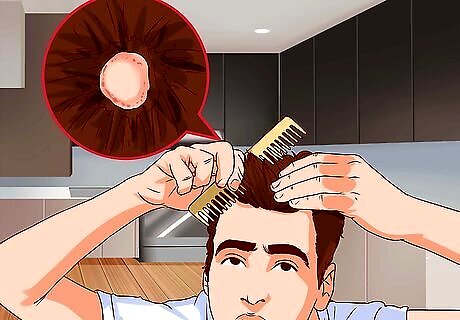
Check for scaly skin on your scalp. Ringworm can cause small patches of scaly skin on the scalp to develop. These spots may be sore and itchy. Sometimes scaly skin can be an indication you have dandruff, not ringworm. If you start to notice this symptom, get your scalp examined by a dermatologist to determine if you have a ringworm infection.

Note if you experience hair loss. Hair loss caused by ringworm starts in small patches that are generally the size of a coin. As the disease progresses, the hair loss spot will start to grow in size and may form a ring shape, hence the name “ringworm”. Your hair may break off, leaving stubble that looks like small black dots. The bald patches may be scaly and swollen.
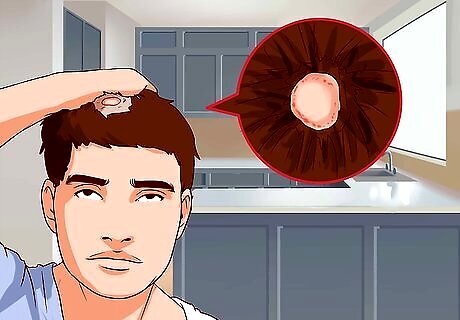
Look for small, red sores on your scalp. As scalp ringworm progresses, small, pus-filled sores can begin to develop on the scalp, called a kerion. The skin may also begin to "crust" —it will look like very dry flaky skin that you can peel off. These are all signs that the infection has gotten worse and requires immediate medical care. If you have oozing and tender sores on your scalp, you should get them treated right away as they can cause permanent scarring and hair loss. If you have a kerion, you may also develop a fever and swollen lymph nodes. Your body will try to fight the ringworm by raising the temperature of your body, leading to a fever. Your lymph nodes will also swell as they try to get the infection out of your blood.
Recognizing the Symptoms of Body and Foot Ringworm

Note any red blisters on your face, neck, or hands. Body ringworm can appear on your face, your neck, and your hands, often in the form of red blisters in a ring shape. If you have ringworm on your face and neck, you may have itchy, swollen skin that becomes dry and crusty; however, these symptoms may not appear in a ring shape. If you develop beard ringworm, you may notice chunks of hair are missing from your beard. You can take steps to hide ringworm in these highly visible areas. Hand ringworm can cause the skin of your palms and your fingers to appear thicker or raised. It may affect one hand or both hands, and your hands may appear normal on one side and thicker or raised on the other side. In more severe cases, the red blisters on your body can spread, grow in size and merge. These blisters will be slightly raised when touched and very itchy. Pus filled sores may also start to develop around the rings.
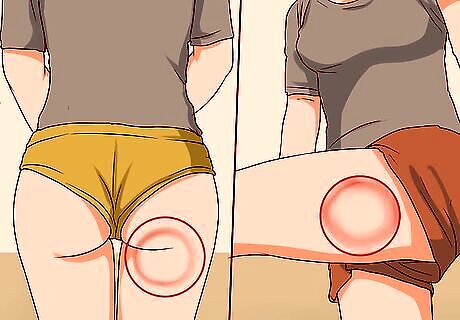
Check for groin ringworm. Groin ringworm, also known as Jock Itch, is a type of body ringworm that generally forms around the inner thighs and buttocks. Look for red or brown sores in these areas, though they may not appear in the shape of a ring. These sores may also be pus filled. You may also have large patches of red or itchy skin in your inner thigh and buttocks areas. However, ringworm will generally not affect the genital area.
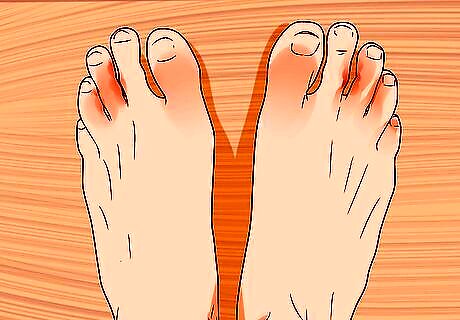
Look for red and flaky rashes between your toes. In the case of foot ringworm, also known as Athlete’s Foot, rashes will appear between your toes. You will also most likely experience an itching sensation that you can’t seem to get rid of. As the ringworm continues to progress, you may begin to feel a burning or stinging sensation on your feet and toes. You should also check the soles and sides of your feet for flakiness that resembles scales. If your ringworm has progressed this far, you should seek immediate medical care. You can also get ringworm in your nails, also known as a fungal nail infection. Your nails may turn black, white, yellow, or green, they may turn brittle and fall off, or the skin around your nails may become sore.
See a doctor for a proper diagnosis. There are many skin conditions that can have an identical appearance to ringworm, so it is important to see a doctor for proper diagnosis and treatment when this skin issue is suspected. There are many over-the-counter products targeted towards ringworm.
Knowing the Risk Factors

Practice good gym and locker room hygiene. Like many fungal infections, ringworm thrives in moist environments. Limit your exposure to ringworm by wearing shower shoes in the locker room and washing your hands before and after every workout. You should also always wipe down gym equipment, including workout mats, before and after use to prevent the spread of an infection. As soon as you are done with your workout, you should change out of your gym clothes so you are not wearing sweaty clothing that can allow fungi to thrive and grow. You should also never share your towel when you workout and wash all clothing and towels after every use. If you swim at a public pool, you should practice good locker room and pool hygiene. Always wear shoes in the showers and shower before and after you go into the water. Make sure you dry off completely after showering.
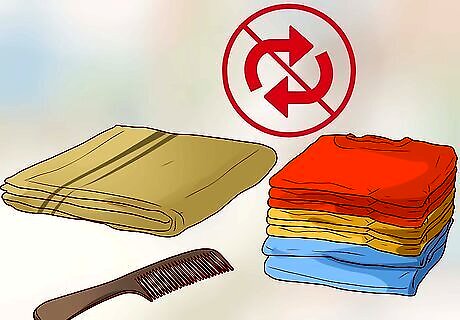
Do not share hair brushes, combs, towels, clothing, or other personal care items. Prevent the spread of ringworm by not lending out any personal care items, especially if ringworm has been going around your classroom or your office. Keep your hair brushes, combs, sporting equipment, and towels clean so you do not encourage the growth of fungus like ringworm.

Get your pets checked for ringworm. If your pet has fur or hair, she may have bald spots in her fur or hair, as well as red blisters or scaly skin. Take your pet to the vet to check her for ringworm, as you can contract ringworm from an infected pet. Avoid touching your pet if she has ringworm and wear gloves around her. You should also wash your hands before and after touching any animal in the event they are carrying a fungal infection.


















Comments
0 comment